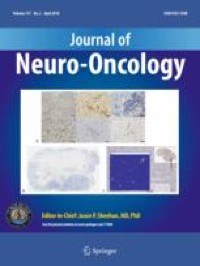Abstract
Purpose
Neurosurgeons adopt several different surgical approaches to deal with glioblastomas (GB) located in or near eloquent areas. Some attempt maximal safe resection by awake craniotomy (AC), but doubts persist concerning the real benefits of this type of surgery in this situation. We performed a retrospective study to evaluate the extent of resection (EOR), functional and survival outcomes after AC of patients with GB in critical locations.
Methods
Forty-six patients with primary GB treated with the Stupp regimen between 2004 and 2019, for whom brain mapping was feasible, were included. We assessed EOR, postoperative language and/or motor deficits three months after AC, progression-free survival (PFS) and overall survival (OS).
Results
Complete resection was achieved in 61% of the 46 GB patients. The median PFS was 6.8 months (CI 6.1; 9.7) and the median OS was 17.6 months (CI 14.8; 34.1). Three months after AC, more than half the patients asymptomatic before surgery remained asymptomatic, and one third of patients with symptoms before surgery experienced improvements in language, but not motor functions. The risk of postoperative deficits was higher in patients with preoperative deficits or incomplete resection. Furthermore, the presence of postoperative deficits was an independent predictive factor for shorter PFS.
Conclusion
AC is an option for the resection of GB in critical locations. The observed survival outcomes are typical for GB patients in the Stupp era. However, the success of AC in terms of the recovery or preservation of language and/or motor functions cannot be guaranteed, given the aggressiveness of the tumor.



No comments:
Post a Comment